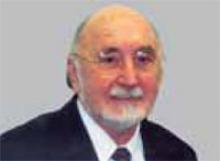10. Kanis JA, Johnell O, et al. Risk of hip fracture according to the World Health Organization criteria for osteopenia and osteoporosis. Bone. 2000;27:585-590.
11. Kolata G. Gains on heart disease leave more survivors, and questions. New York Times. January 19, 2003;sect 1:1.-
Estrogen is a valid option when prescribed correctly
Women are living longer, but not necessarily better. Increases in longevity are partially offset by a greater prevalence of chronic conditions such as osteoporosis, cardiovascular disease, cognitive dysfunction, and breast cancer—all of which impact a woman’s quality of life. HRT is a logical outgrowth of this increased longevity.
Unfortunately, while it represents an attempt to improve the health and well-being of postmenopausal women, HRT is based upon a faulty premise: that all women are biologically equal and react similarly to the menopausal transition. Equally erroneous are 2 corollaries: that all menopausal women will respond to the same dose of HRT and that all estrogen formulations are comparable.
As has become clear, this generic approach to menopause is inappropriate. The convenient but simplistic strategy of treating all women at and beyond menopause with a standard dose of the same estrogen-progestin formulation is ill-founded. Estrogen offers the postmenopausal patient numerous benefits and needs to remain an important part of the Ob/Gyn’s options. However, it can no longer be prescribed in the “traditional” manner.
The trouble with tradition
Here are 2 problems with the conventional approach:
- Every woman synthesizes estrogen differently, depending on the endocrinology of her nonreproductive organs in the premenopausal, perimenopausal, and postmenopausal periods; the pathogenesis of conditions such as cardiovascular disease and their relationship to estrogen and androgen synthesis and metabolism; and the pharmacokinetic and pharmacodynamic variance between HRT formulations.1,2
- Women are encouraged to have annual examinations, yet a review of the type and dose of HRT rarely takes place at these exams.
New strategy: Replenish hormones to age 65, maintain thereafter
Women need “individualized and adjusted hormone therapy.” This is relevant for patients 35 to 65 years of age and is based on our ability to tailor the type and route of hormone therapy to approximate the hormonal milieu of women at a given age. The term “HRT”—which I define as the attempt to replicate a premenopausal woman’s hormonal milieu—should be restricted to women who are between the ages of 35 and 45 who need hormone therapy. After that, hormone replenishment should be practiced until age 65. Based on the pharmacokinetics of estrogen, HRT is best achieved by non-oral estradiol; hormone replenishment relies on the bioconversion of estradiol to estrone after oral estrogen and the “normal” postmenopausal estrone:estradiol ratio. Hormone maintenance refers to women who have been stabilized on a prior hormonal regimen. They should be left on their current medication as long as there is still an indication for hormone therapy.
The type, dose, and route of this therapy should be regularly reviewed and adjusted, if necessary, as a woman’s needs change over time.
Estrogen synthesis and metabolism. Only 2 bioavailable estrogens are synthesized in postmenopausal women: estradiol and estrone. Both are derived from the aromatization of androgens in adipose tissue and muscle and are further metabolized by the liver. The aromatization of androgens to estrogens occurs in tissues such as breast, bone, and coronary artery, and the local concentration far exceeds that measured in the peripheral circulation. The estrogen synthesized locally and the metabolites produced by the liver can have protective effects (increased bone density) or potentially harmful effects (breast cancer), even though serum estradiol may be within a “normal” range (i.e., less than 20 pg per deciliter).
The synthesis and metabolism of estrogen are genetically controlled. For example, the genes determine whether a woman has a high risk of breast cancer. Therefore, clinicians should select the dose and route of estrogen administration that would optimize the benefit and limit the risk of hormone therapy. This will be different in each woman. (Although most postmenopausal women can safely take hormones, some may have an endogenous abnormality that precludes the therapy.)
Fraction of dose may relieve symptoms. The estrogen threshold for the relief of hot flashes—HRT’s main indication—also varies among women. One half to one quarter of the “standard” dose (0.625 mg per day of CEE)—the amount prescribed in the WHI3—has been shown to be effective.
The long trajectory of ‘menopausal’ diseases
The pathogenesis of osteoporosis and cardiovascular disease—conditions for which longterm HRT has been advocated—commences with the first menstrual period (FIGURE). Thus, primary prevention should begin in early adulthood. This includes diet and lifestyle modifications and exercise. Normal ovarian function is essential, as anovulatory hypoestrogenic disorders predispose young women to a greater risk of these conditions later in life.



